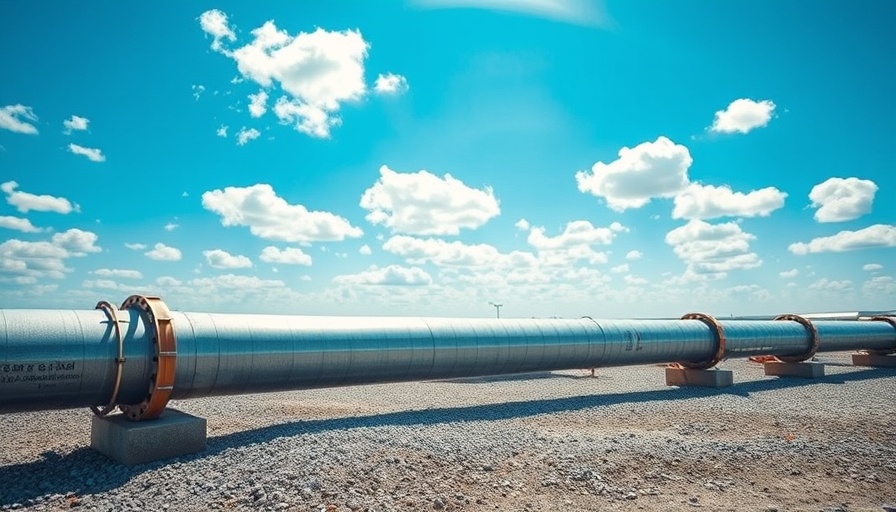
Pipeline Expansion: A Looming Threat to Climate Goals
The United States is grappling with significant infrastructural changes as plans for gas pipelines ramp up across the nation. Alarmingly, more than three-quarters of the nearly 99 billion cubic feet per day of new gas capacity in development is directed towards liquefied natural gas (LNG) exports. This startling conclusion arises from a recent report by the Center for Energy & Environmental Analysis (CEEA), highlighting implications that extend far beyond economic interests and touch the fragile fabric of our climate.
Understanding the Emissions Impact
What does this increased pipeline capacity mean environmentally? According to the CEEA report, if all proposed pipelines are constructed and operated at full capacity, the carbon dioxide emissions generated would dwarf those currently produced by coal-fired power plants in the U.S. This paints a bleak picture of America's commitment to reducing greenhouse gas emissions as climate change poses an increasingly urgent threat.
More concerning is the report's assertion regarding methane, a significant greenhouse gas emitted throughout the natural gas supply chain—from extraction at wellheads to transport and utilization. Methane's impact is pronounced; its emissions could pack a climatic severity nearly twice that of CO2 over a two-decade period, thereby underscoring the critical need for robust regulatory frameworks and practices within the industry.
The Economic Angle: A Dependency on Natural Gas
While the push for more pipelines appears to cater to export demands and economic growth, experts like Jeremy Symons, president of the CEEA, caution that this dependency on natural gas could hinder our nation's transition towards cleaner energy alternatives. The existing capital flow into gas infrastructure is robust, and its potential to escalate production levels could lock in fossil fuel dependency for decades to come. This raises the question: is short-term economic gain truly worth the long-term impacts on climate stability?
Environmental Regulations: A Double-Edged Sword
With significant regulatory shifts ongoing, such as the rollback of methane regulations enacted under the Trump administration, the outlook for effective management of natural gas emissions becomes even less optimistic. As regulatory frameworks fluctuate, the accountability for industry practices diminishes, amplifying the environmental risks associated with increased pipeline infrastructure. Danny Richter, a senior fellow at CEEA, indicates that improved pathways for mitigating these emissions were available but have since been compromised. The weakening of such regulations grants the oil and gas sectors more leeway, posing substantial risks to the environment.
The National Significance of Local Actions
This issue transcends local concerns, striking at the heart of national environmental priorities. As plans for pipeline build-outs proliferate, community voices must be mobilized to advocate for accountability and transparency in energy policies. By ensuring that local perspectives are integrated into discussions around energy production, consumers can harness collective power to push for sustainable alternatives before it’s too late. Ignoring the need for local activism could lead to devastating and irreversible effects on our shared environment.
Conclusion: A Call to Awareness
The pipeline build-out in the U.S. represents not only a shift in energy production and export priorities but also raises profound environmental concerns that being realized on a global scale. As significant CO2 emissions loom ahead from liquefied natural gas exports, engagement at all levels becomes essential.
It’s crucial to understand the long-term implications of energy dependency on natural gas and advocate for policies that prioritize sustainable practices and transparency. Only with an informed populace can we hope to pivot towards cleaner energy sources and mitigate the escalating implications of climate change.
Now, more than ever, it’s essential to educate oneself about energy policy implications and become part of the conversation. Awareness leads to advocacy, and advocacy can influence the choices we make as a society.
 Add Row
Add Row  Add
Add 




Write A Comment